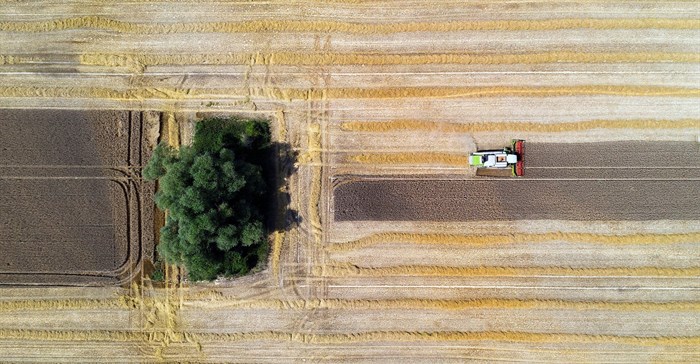
If Africa is to meet its own food consumption needs, and also produce sufficient excess to participate in global agricultural value chains, "we need to understand and harness the benefits of AI in agriculture in Africa too," says Wayne Spaumer, Product Specialist for Precision Agriculture, sub-Sahara Africa at John Deere.
Basic machine sensing has advanced to a stage where agricultural equipment provides a wide range of information on machine operation, inputs, quantities and conditions. Beyond sensing and reporting, however, modern agricultural equipment uses data to support learning, "allowing machines to advise farmers on best practice while also informing future decision-making," says Spaumer.
Firstly, a combine harvester can, today, measure the quantity of material it is harvesting while also recording its quality and weight. At the same time, it can calculate the rate of harvesting, yield per hectare, area cut verses area remaining, predicting time of completion while also informing on the condition of the machines’ mechanical and electronic systems. The machine will also report on how clean the material is and make automatic adjustments to ensure optimal performance. All this information is recorded on the machine and is available to the farmer or operator in real-time as he or she harvests.
Secondly, this information, in the case of a John Deere machine, for example, is also housed on the John Deere cloud-based platform. The platform hosts a programme on which individual farmers can open an Operation Center for their farm.
On each personalised Operation Center farmers can combine the data transmitted from their machine with the farmer’s own historical and other operational data. Each day more data is added to the Operation Center as the machine works. Any other intelligent machines that the farmer might have also add information to the programme.
While the farmers' machines cumulatively provide a lot of information by themselves, all these machines do not have a view of the farmer’s supplier universe or broader value chain.
To get around this, farmers are able to authorise trusted third-party suppliers to share and add additional data to their personalised Operation Center. Typically, this data includes intelligence on; fertilizer, seeds, soil, field surveys, GIS crop imagery, weather, diseases, market prices and any other third-party data relevant to the farmer, his farm, particular crop or specific field.
Once all this information is loaded onto the farmer’s Operations Center in the cloud, "the site is suddenly empowered to plan, monitor and analyse," says Spaumer.
In short, the real power of AI lies in the new reality that, today, a farmer’s agricultural equipment ‘talking to’ trusted partners can actually, "provide a wider and better-informed view of the farmer’s operation and business - and what he should do next - than the farmer himself," says Spaumer.
The use of intelligent machines able to combine the information that they collect with a farmer’s third-party supplier data as well as satellite and broader value chain information - and even market intelligence - is making AI a reality in agricultural machines today.
While the message is clear for Africa’s commercial farmers, "the continent’s smaller-scale farmers can also start leveraging the benefits of technology by forming cooperatives to acquire intelligent machines that converse with the cloud," says Spaumer. Contractor services supplying large groups of farmers with services in Africa could do the same.
In addition, the broader agricultural value chain on the continent, "including fertiliser providers or large mills or other off-takers are also well placed, and clearly incentivised, to supply their farmer clients or suppliers with intelligent machines," adds Spaumer.
Finally, and of particular significance for Africa, the data captured by intelligent machines can also enable financial institutions to fund smaller farmers who, now, thanks to new technology, "are able to provide a data-driven view of their performance and cash flow," adds Spaumer.
If the introduction of basic mechanisation had such a huge impact on yields historically in the developed world, the impact of intelligent machines connected to third-party databases in the cloud is truly revolutionary for Africa.
In this sense AI holds the key to the continent’s food security, broader economic inclusion and social development, "offering African farmers a direct route to improved yields along with the insight to profitably integrate the continents’ agricultural sector into global agricultural value chains," concludes Spaumer.